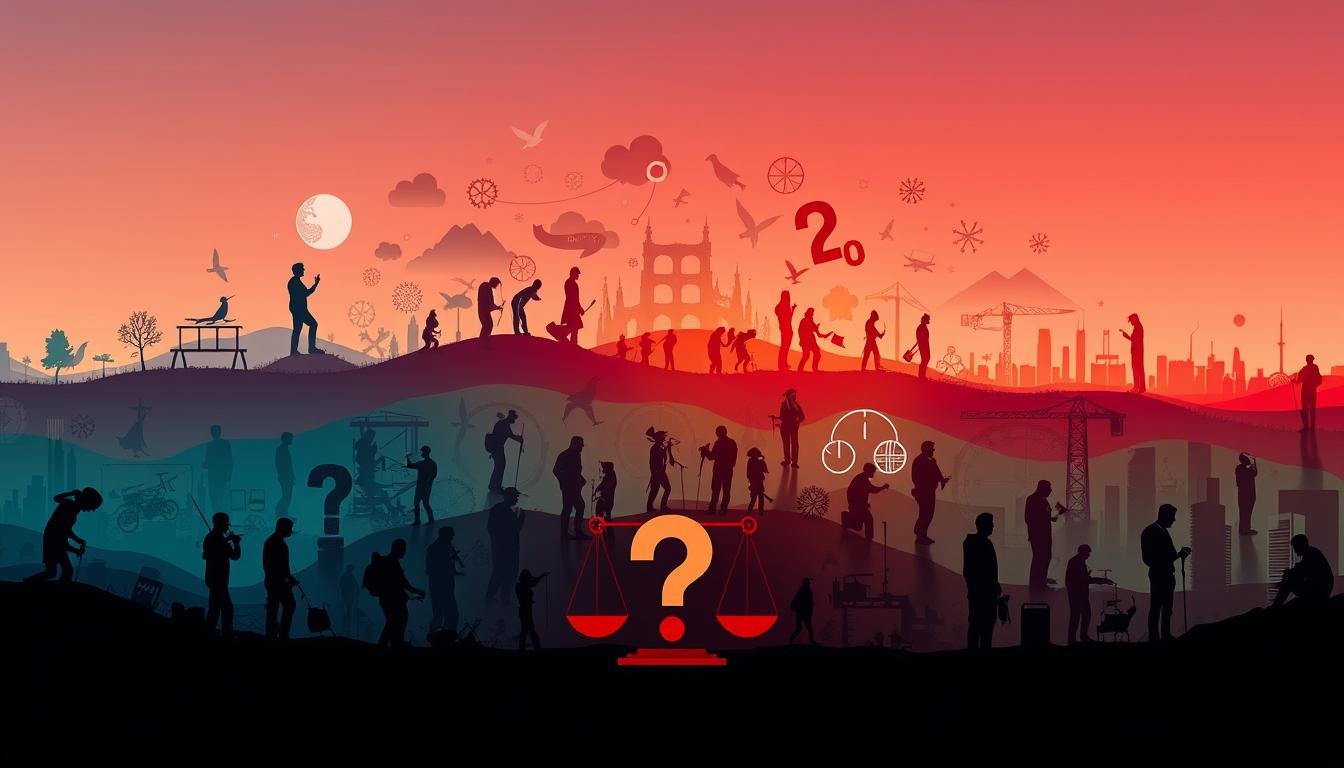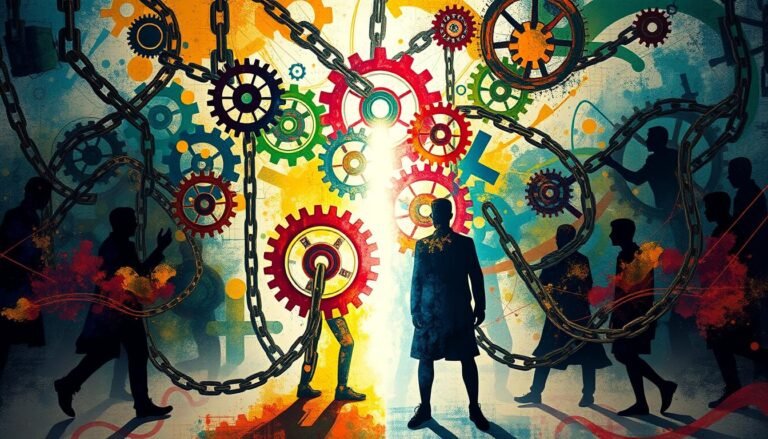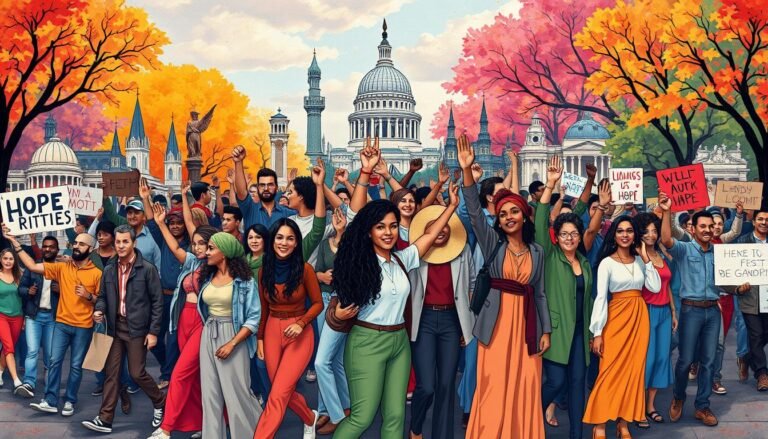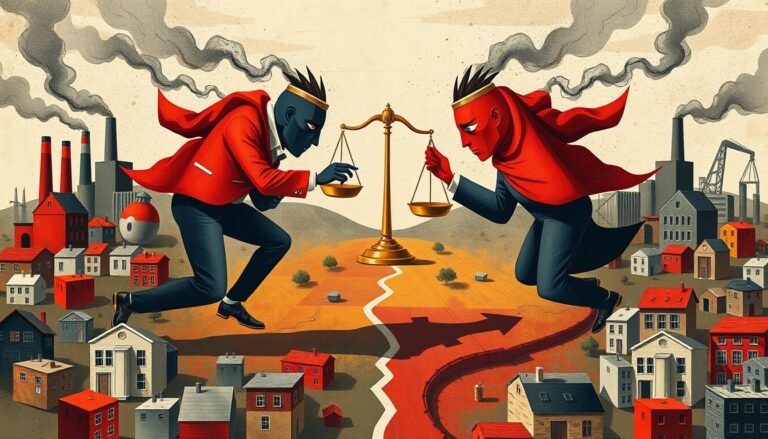Understanding the Sociology of Risk
Ever wondered why some risks scare us more than others? The study of risk sociology helps us understand this. It looks at how society affects our view of danger and safety. This includes everything from air pollution to new technology.
Risk analysis is more than just numbers. It involves culture, social structures, and personal experiences. For example, 40% of people see risk differently because of their beliefs. Also, awareness of air pollution as a risk has grown by 11%.
The idea of a “risk society” is real for 22% of people. They see it as a new kind of modern life. This view changes how we see and handle risks together.
Assessing risk isn’t the same for everyone. Things like gender and race matter, showing a 2% “white male effect” on risk perception. Now, 56% of groups are changing how they talk about environmental risks.
The way we see risks gets amplified by media, culture, and institutions. Knowing this helps us manage risks better and make policies in our connected world.
Key Takeaways
- Risk perception varies widely due to social and cultural factors
- The concept of “risk society” is linked to modern societal changes
- Gender and race influence how risks are perceived
- Organizations are adapting their risk communication strategies
- Social amplification of risk shapes public understanding and response
Introduction to the Sociology of Risk
The sociology of risk looks at how societies deal with threats. It became more popular in the 1990s, thanks to Ulrich Beck’s “Risk Society: Towards a New Modernity” in 1992.
Defining risk in sociological terms
Risk in sociology is more than just dangers. It’s shaped by culture, institutions, and politics. Niklas Luhmann says how we see risk as different from safety affects our view of risk problems.
The importance of studying risk from a sociological perspective
Looking at risk through sociology helps us see how groups and society make risk decisions. It covers not just big disasters but also our daily choices. These choices, in turn, shape our view of dangers in society.
Key sociologists who have contributed to risk theory
Many sociologists have changed how we see risk in today’s world:
- Ulrich Beck: Came up with the “risk society” idea
- Mary Douglas: Talked about the cultural side of risk
- Michel Foucault: Showed how risk is used in social control
| Theorist | Key Concept | Impact on Risk Sociology |
|---|---|---|
| Ulrich Beck | Risk Society | Pointed out how modern societies deal with risks |
| Mary Douglas | Cultural Theory of Risk | Looked at how culture affects how we see risk |
| Michel Foucault | Governmentality | Explored how risk is used for social control |
These ideas have greatly shaped our view of risk, how we talk about it, and how we manage it in our complex world.
The Evolution of Risk Perception in Society
Risk perception has changed a lot over time. This change is thanks to new technology and shifts in society. The idea of a “risk society” came up in the late 20th century. It points out how complex life’s risks have become today.
Now, things like media, cultural values, and trust in institutions affect how we see risks. The COVID-19 pandemic has really changed how people see risks. It made people worry more and made it harder to make decisions.
This big event showed us how not ready we are for big risks and complex events. It pointed out a need for better science education.
Culture plays a big part in how we see and handle risks. The social amplification of risk framework shows how risks can get bigger or smaller because of social and cultural factors. During the pandemic, we saw more public worry and doubt about science.
Today, we face risks like pollution, global warming, and side effects from medical treatments. These risks come from things like globalization. They affect how we make decisions and see science and technology.
| Risk Type | Example | Impact on Risk Perception |
|---|---|---|
| Technological | Pollution | Increased awareness of environmental risks |
| Health | Pandemics | Heightened global health concerns |
| Environmental | Climate change | Growing recognition of long-term ecological risks |
The way we see risks is changing. We need to rethink what it means to be a citizen. It’s about having attitudes that focus on justice to tackle global problems. We also need better science education to help people be active citizens and face global challenges.
Understanding the Sociology of Risk: Theoretical Frameworks
The sociology of risk looks at how societies deal with threats. It has come up with important theories. These theories help us grasp how risk and society are linked.
Risk Society Theory by Ulrich Beck
Ulrich Beck says modern societies focus a lot on managing risks. He wrote six books on risk, with three in 1992. His idea is that new risks from technology have made old social lines blur.
Cultural Theory of Risk by Mary Douglas
Mary Douglas wrote four books on risk. She says culture affects how we see and handle risks. Different groups see and act on risks based on their values and beliefs.
Governmentality and Risk by Michel Foucault
Michel Foucault looked at how risk helps control and govern society. He showed how institutions deal with and spread risks. His work has shaped studies on environmental rules and managing risks across borders.
| Theoretical Framework | Key Focus | Notable Publications |
|---|---|---|
| Risk Society Theory | Modern risk management | 6 by Ulrich Beck |
| Cultural Theory of Risk | Cultural biases in risk perception | 4 by Mary Douglas |
| Governmentality and Risk | Risk as social control | Various studies on environmental regulation |
These theories give us different views on how risk and society interact. They help us understand risk better. This shapes how we manage and govern risks in different areas.
Social Construction of Risk
Risk perception changes over time and is shaped by social and cultural factors. Societies define and interpret risks in their own ways. This shows that risk isn’t just about facts, but also about cultural values and power.
A 2009 study looked into how young people see risk. It questioned three main ideas about risk: that it’s always bad, tied to uncertainty, and that experts are always right. The study called for more real-world research on risk, moving away from big theories.
Beck and Furedi have greatly helped us understand how we see risk. Beck’s ‘Risk Society’ idea says risk is a way to deal with dangers from modern life. Furedi talks about a “culture of fear” where risks go beyond science and tech.
“Liquid fear” – Zygmunt Bauman, discussing risk in modern society
Why do different societies see the same risks differently? Things like gender, race, and class matter a lot. For example, Finucane et al. (2000) found that some groups feel more at risk than others.
| Aspect | Influence on Risk Perception |
|---|---|
| Cultural Values | Shape what is considered risky |
| Power Dynamics | Affect risk definition and management |
| Media | Amplify or attenuate risk perception |
| Expertise | Influences public trust in risk assessment |
Risk Communication and Media Influence
The mass media greatly shapes how we see risk. Over time, how we talk about risk has changed a lot. This change reflects new challenges and shifts in society.
Mass Media’s Impact on Risk Perception
Studies show that media can change how we view threats. For example, during the Ebola outbreak, many in unaffected countries thought they were at risk. This shows how media can deeply affect our perception of risk.
Social Amplification of Risk
The social amplification of risk framework explains how media can make risks seem bigger or smaller. A study on the 2009 H1N1 flu outbreak found most articles analyzed risk communication trends. This shows how complex this issue is.
Challenges in Effective Risk Communication
Effective risk communication is hard. A study found many healthcare workers see risk as both a system issue and a public worry. This mixed view makes messaging tricky. Debates, like those on Ebola quarantines, also show a split between science and fear-based views. This makes clear communication tough.
| Aspect | Percentage |
|---|---|
| Articles using quantitative methods | 62.5% |
| Science-based discussions | 54.7% |
| Fear-based narratives | 45.3% |
It’s important to understand these dynamics. We need effective risk communication strategies. These strategies should inform people about risks and how to respond.
Risk Governance and Decision-Making
Risk governance helps societies handle risks by identifying and managing them. It’s a detailed process that involves decisions at individual, organizational, and community levels. Healthcare is a great example of how risk governance works.
In healthcare, leaders focus on managing risks to prevent poor health outcomes. This is because treating health problems costs a lot and requires a lot of resources. So, there’s a move towards standard practices through rules, protocols, and checks.
The UK’s healthcare has seen more rules because of big scandals that made people lose trust in doctors. This shows how society is moving towards better management in public services. But, these efforts to keep patients safe might also affect their dignity and the way they are cared for.
Now, making decisions in healthcare is about finding a balance. Healthcare workers have to deal with different views on risk management. These views affect how they act and how patients are treated.
| Factor | Impact on Risk Governance |
|---|---|
| Aging populations | Increased pressure on healthcare systems |
| Chronic illnesses | Need for long-term risk management strategies |
| Technological advancements | New opportunities and challenges in risk assessment |
Good risk governance needs a careful approach that looks at expert advice and what the public thinks. It must tackle the unknowns in healthcare while creating a space for high-quality care.
The Concept of Edgework: Voluntary Risk-Taking
Edgework looks into why people choose to take risks on purpose. Sociologist Stephen Lyng introduced this idea. He explains why people go for dangerous situations and how they handle them.
Stephen Lyng’s Theory of Edgework
Lyng’s theory is about how people on purpose take big risks. These risks can be in extreme sports or dangerous jobs. By taking these risks, people feel more in control and fulfilled.
Examples of Edgework in Modern Society
Today, edgework shows up in many ways. Skydiving, BASE jumping, and white-water kayaking are some examples. These activities need skill and the ability to control fear to be done well.
| Activity | Risk Level | Skills Required |
|---|---|---|
| Skydiving | High | Precision, Quick Thinking |
| BASE Jumping | Very High | Extreme Focus, Timing |
| White-water Kayaking | High | Balance, Navigation |
Sociological Implications of Voluntary Risk-Taking
Edgework is more than just seeking thrills. It challenges what we see as normal and can be a way to resist the everyday. Studies show that men and women see risks differently. Women might feel mixed about taking risks, while men tend to enjoy it more.
Edgework can also fit with certain work cultures. In business, taking risks can lead to more success and profits. This mix of personal and work risks makes for a complex view on managing risks.
Gender, Race, and Social Class in Risk Perception
Risk perception changes a lot based on gender, race, and social class. Cultural beliefs, social roles, and economic resources affect how different groups see and handle risks.
Research points to a “White Male Effect” in risk perception. White males often see risks as less serious than others. This shows how gender and risk perception are linked in society.
Racial differences in risk perception are clear, especially with environmental health issues. Minorities worry more about environmental pollution, guns, and other dangers than whites. These findings show why racial factors matter in assessing risks.
Socioeconomic factors greatly influence risk perception. Poor communities face more environmental dangers, showing environmental injustice. This shows how social class and risk are connected.
“Around one-third of the white male population comprises highly risk-skeptical individuals.”
Knowing these differences is key to making fair risk management policies. Policies must meet the needs of diverse groups for effective risk prevention across society.
| Demographic Group | Risk Perception Level | Key Concerns |
|---|---|---|
| White Males | Lower | Less fearful of various risks |
| Women | Higher | Environmental pollution, health risks |
| Minorities | Higher | Environmental hazards, social inequities |
| Low-income Communities | Higher | Proximity to hazardous facilities, air pollution |
Organizational Culture and Risk Management
Organizational culture is key in shaping how companies handle risks. High-risk sectors like nuclear power and aviation need certain cultural traits for safety and efficiency.
The Influence of Organizational Culture on Risk Perception
A company’s culture deeply affects how risks are seen and managed. Many organizations struggle with creating a “risk-aware culture.” This gap makes it hard to put effective risk management plans into action.
Decision-making Processes in High-risk Organizations
High-risk sectors have unique challenges in making decisions. They often balance the need for stable criteria with the desire to adjust based on results. This can cause surprises or regrets, making risk management harder.
Challenges in Implementing Effective Risk Management Strategies
Putting strong risk management strategies in place is tough due to resistance and conflicting goals. A survey showed a big gap in understanding about organizational culture and how it needs to change for better risk management.
| Traditional Risk Management | Enterprise Risk Management (ERM) |
|---|---|
| Primary responsibility assigned to risk manager | Collaborative approach involving Chief Risk Officer and other departments |
| Limited risk awareness across the organization | Everyone develops risk appreciation within their domain |
| Focus on individual risk areas | Holistic approach to identify, measure, manage, and disclose key risks |
To beat these challenges, companies need a risk-aware culture that matches their values. This means leaders must be able to handle and learn from risks. It also means encouraging ongoing learning from incidents to improve risk handling and perception.
Global Risks and the World Risk Society
Ulrich Beck introduced the world risk society, showing how global risks are more connected than ever. In 2006, he talked about how risks like climate change, financial crises, and pandemics are changing our world. These risks cross borders, making us question old ways of governing.
Natural disasters show how vulnerable we are. Hurricane Katrina in 2004 was a global event that showed society’s weak spots. The BSE crisis in Britain and the 9/11 attacks also showed how unpredictable risks can be. In 1974, chemists Rowland and Molina warned about CFCs harming the ozone layer, showing how human actions affect the world.
The world risk society can react in three ways: deny, ignore, or change. Research shows that societies now debate, prevent, and manage risks more. This change means we’re moving to a risk society, facing risks that are hard to predict and can’t be fixed easily.
Dealing with these risks requires teamwork and new ideas. The world risk society needs fresh strategies to handle these challenges. By tackling these risks, we can make the world more resilient and ready for anything.
Source Links
- Sociology of Risk
- The Sociology of Risk (Chapter 13) – The Cambridge Handbook of Sociology
- The Sociology of Risk / Niklas Luhmann / …working until the 2000s / Sociologists | Unter Soziologen / Among Sociologists
- sociology of risk – This Sociological Life
- Risk Society and Science Education: Lessons from the Covid-19 Pandemic
- Integrating Key Insights of Sociological Risk Theory into the Ecosystem Services Framework
- How to Make Health and Risk Communication on Social Media More “Social” During COVID-19
- The Evolving Field of Risk Communication
- Eugene A. Rosa, Ortwin Renn, and Aaron M. McCright: The Risk Society Revisited
- Risk, governance and the experience of care
- edgework – This Sociological Life
- Evaluating the Impact of Race and Gender on Environmental Risk Perceptions in the Houston Neighborhood of Manchester
- Gender, Race, and Risk Perception: The Influence of Cultural Status Anxiety
- Gender, ethnicity and environmental risk perception revisited: the importance of residential location
- The Sociology of Risk in Organizations / Safety and Risk Concepts / Themes | Unter Soziologen / Among Sociologists
- Assessing and Re-setting Culture in Enterprise Risk Management
- doi:10.1080/03085140600844902
- Ulrich BECK: Living and coping with world risk society – Globernance







